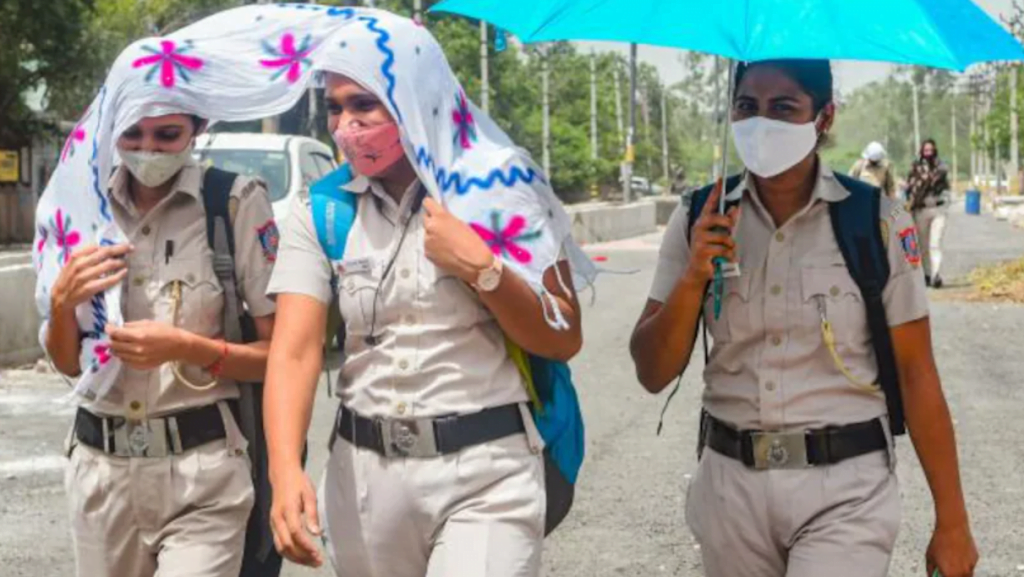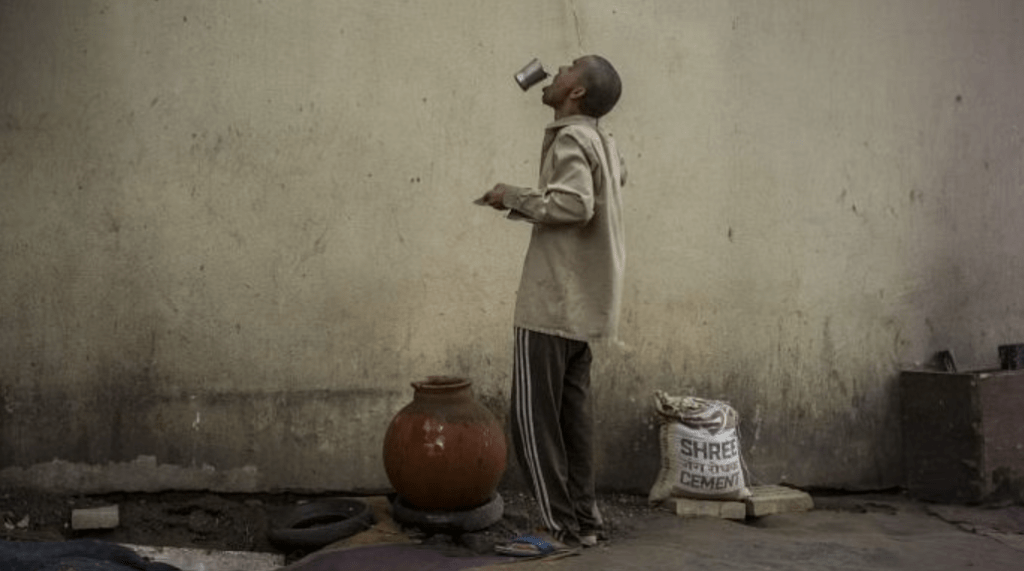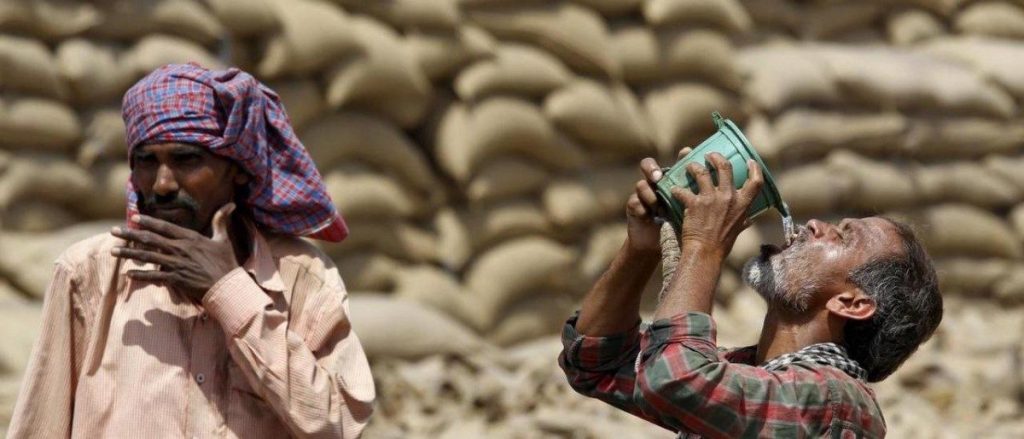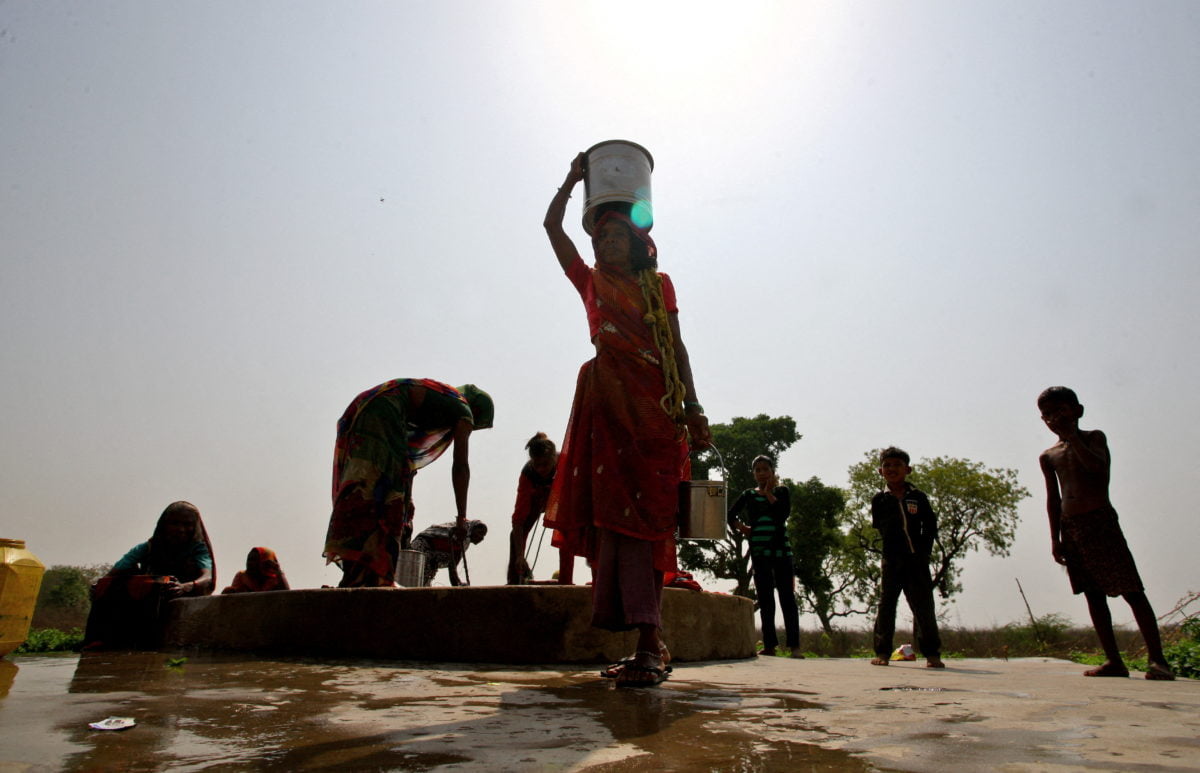The summer in India this year has been a harbinger of record-breaking temperatures with sweeping heat waves all over India mainly in northern states. The blistering heat at present is serving as a prime reminder of the escalating issue of global warming. With the increased temperatures the heat waves are also bearing the devastating truth that climate change unfairly affects the poorest and the most marginalised. With dozens of people losing lives in a span of 24 to 48 hours in states like Bihar and Uttar Pradesh, it is reflective of the tragic climate crisis heightened by stark inequalities raging in India.
From lacking improper residential spaces, and occupational hazards, to basic cooling systems or lacking adaptive capacity, the poorest strata of India find themselves in a fix to balance their livelihood and health in the face of climate change.
On the larger canvas, from deadly heatwaves to disastrous cyclones, the world’s underprivileged always bear the brunt of climate change. Meanwhile, various socio-economic factors further amplify their vulnerability and agony due to unpredictable climate shocks. From ill-equipped health infrastructure to a lack of proper employment opportunities, the underprivileged find it hard to fight through the storm of limited access to basic resources during extreme weather changes. Thereby, creating a vicious cycle of poverty, vulnerability, and climate crisis which in turn traps the upcoming generations in an ongoing struggle for survival and sustenance.
How bad are the rising temperatures in India?
Reports shared by the principal of Maa Vindhyavasini Autonomous State Medical College in Mirzapur highlight that 13 poll personnel in Uttar Pradesh’s Mirzapur District lost their lives to high fever and high blood pressure caused by extreme heat. In Sonbhadra District, two more on-duty personnel died while nine others were admitted to the hospital owing to heatstrokes. Of the 13 people who died due to the heat, two out of four found dead on the spot were home guard jawans. Amongst the total seven home guards, five died after being brought to the hospital within a short time.

The guards were predominantly in the age group of the middle fifties. Apart from home guard jawans, amongst the deceased, there were three sanitation workers, one clerk from the Chief Medical Officer’s office, one peon, and a coordination officer.
As of May 30, 46 people died across India due to heat strokes while 19,189 people suffered from suspected heat strokes. Reports from the National Centre for Disease Control (NCDC) highlight 56 deaths were caused due to heat strokes (since 1st March).
In Bihar, with temperatures shooting as high as 44 degrees Celsius in addition to extreme heat waves, within 24 hours, around 19 people have died. In Bihar’s Aurangabad district, 12 people lost their lives to heatstrokes, 4 died in the Kaimur District and 3 died in the Bhojpur district. All of the deceased were posted at the polling stations and they passed away due to heat-related illnesses. One of the three who died in the Bhojpur district was the presiding officer as well. Unfortunately, politicians ensconced in air-conditioned rooms fail to realise the death price the poll personnel pays to conduct a fair and smooth election even when the mercury shoots high!
As of May 30, 46 people died across India due to heat strokes while 19,189 people suffered from suspected heat strokes. Reports from the National Centre for Disease Control (NCDC) highlight 56 deaths were caused due to heat strokes (since 1st March). The data from NCDC also promptly brought to the limelight that the majority of the emergency wards’ cases were heat-oriented. As per the statistics shared by the states, the NCDC report reflects that more than 7 lakh people had to be urgently admitted to the emergency wards of the hospital in need of primary care owing to heat-related health hazards.
Meanwhile, out of the suspected cases of heatstrokes, around 605 people died of cardiac arrests. However, this morbid data is exclusive of the deaths that have occurred in Bihar, Uttar Pradesh, and Delhi. Most likely, the death numbers will be higher.
Why are the masses in India getting so vulnerable to the heat?
For the urban poor in India, living in informal settlements or on the footpaths, the heatwaves diabolically transform their makeshift homes made of tin roofs into death traps. The inside temperature under the tinned roof gets increased by an average of 2 degrees Celsius as compared to the outside temperature. This means that during the heatwaves, the suffocation and the body distress manifolds staying within the houses rather than wandering out. With less to almost zero ventilation or access to proper drinking water or steady electricity, coping with the rising heat becomes a deadly problem for the urban poor.
Unfortunately, to date, the urban poor who mostly work as manual labourers, domestic workers or street vendors still cannot access healthcare facilities. The increasing heat is posing a huge threat to both their health and economic productivity.
With cramped living spaces in the urban poor neighbourhoods involving high population density, limited area, and less green cover, the urban poor are vulnerable to high heat both in the day and the night. The informal settlements in short rather than protecting the vulnerable from the heat, expose them more to the challenges of high temperatures which further adds to their susceptibility.

In the urban areas in India, the increased skyscrapers and deforestation lead to more heat being retained by the concrete structures; leading to trapped heat release even at night. Adding on to the misery, to cater to their family needs, when people venture out in the scorching heat, they fall prey to the heatwaves, leading to dehydration and in the worst case scenario, even, death. Unfortunately, to date, the urban poor who mostly work as manual labourers, domestic workers or street vendors still cannot access healthcare facilities. The increasing heat is posing a huge threat to both their health and economic productivity.
Having said that, the rural poor’s condition is no less vulnerable. Mostly working as farmers or agricultural labourers, the rising temperature threatens their livelihood. The heat dries out the soil moisture and lowers the groundwater tables; leading to the destruction of crops and piling up debts. With intense heat, destruction of crops, no fodder or access to clean water, raising livestock (which is usually a source of extra income) is also hindered.
In particular, the high soaring temperatures from March to May can also blight the crops. Also, the earlier harvest can go bad easily due to the excess heat, the rising humidity (due to the upcoming monsoons), and the non-availability of cold storage facilities to store vegetables. With more damaged crops and rotten vegetables, the income of the farmers is further reduced making the summer season even harder. Altogether, the heat spirals the rural farmers further into debt and prolonged poverty in addition to their declining health issues like heat strokes, dehydration, and also in some cases, untimely death.
How to protect all amidst the boiling temperatures?
The compounding climate injustice needs immediate redressal to keep everybody safe on the fast-warming planet. To begin with, India needs a robust public health infrastructure to cater to the most impoverished areas and all in need. It is important to factor in social protection plans in the period of heat like cash transfers and safe and adequate employment schemes so that the underprivileged are not forced to work long hours in the sun.

Additionally, with paltry income, the poorest lot (both urban and rural) are not capable of purchasing air conditioning equipment or even getting their makeshift homes adequately ventilated with proper insulation. Hence, it is important to raise awareness amongst these communities so that they can benefit from the housing facilities under Government schemes like PM Awas Yojana in addition to the cash transfer schemes which will help them tackle the heat and economic productivity.
The Pradhan Mantri Awas Yojana is a flagship programme initiated by the Ministry of Housing and Urban Affairs which helps migrant workers, construction labourers and urban poor to have resilient, eco-friendly and sustainable homes which are closer to their workplace. It is understandable, that these means of solutions can only provide temporary respite so the Government of India in collaboration with various civil society organisations has to prepare a structured permanent solution.
It is crucial to take immediate action to address climate change and its disproportionate effect on the marginalised so that more lives and livelihoods are not lost. In the same tune, it is equally essential to bear in mind that if climate change is not checked now, then it will initiate a cascading effect of acute poverty and vulnerability; wrecking the lives of the generations to come.
Interestingly, the data that is published more often than not are class, caste and gender-neutral which draws a curtain to the prime issue of the different vulnerability factors of each section of the society. A security guard or a construction worker is way more vulnerable to the heat than a doctor treating patients in air-conditioned clinics. It is high time that the data and hence the consequential efforts to address the knowledge gap are bridged.
In this light then, the collective efforts of the Government of India, and policymakers with the continuous support of the society, will build up the resilience of India to combat the climate crisis and make way for a better space to live for one and all.





